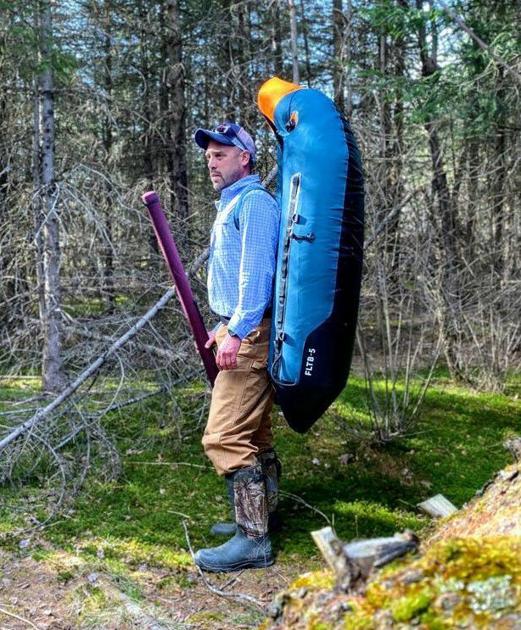I HAVE many acquaintances who enjoy hiking in New Hampshire and I am lucky to be frequently invited to join them. When I learn the details of a particular adventure: the carefully planned route, the distance of the hike or the desired elevation, I am always excited.
My first question is often the same and clearly illustrates my misunderstanding of hiking. “What are we gonna do when we get there?” I ask, and I am usually answered with a pair of rolling eyes.
The most experienced hikers, you see, have no destination at all, but rather a journey. The walk is the adventure and the idea of a destination or activity is of minimal importance. For someone who hunts and fishes as much as I, this can be difficult to understand.
I spend a lot of time walking through the woods and I am subconsciously drawn toward something. Each step brings me closer to a tangible object that might be a remote pond, an acorn-covered ridge, or a quiet beaver pond filled with trout.
One of my favorite summer activities exemplifies this attitude and combines significant hikes with a specific destination and purpose. With a float-tube strapped to my back and a fly rod in a case, I frequently find myself searching for hidden waterbodies wherein I can float and cast flies at unsuspecting fish.
Float tubes have come a long way since I first began using them and, like everything else, are easier to use, more effective and of greater quality. Where my first was adorned with patches, duct tape and rubber cement, my current one is strong, sleek and as light as any pool floaty.
For those unfamiliar with their structure, these watercrafts are often a single, horseshoe-shaped tube inflated manually or with a small pump. In the center is a mesh seat with two leg holes and some type of slight back support.
The angler will be half-dipped in a cold pond and, as such, wears a pair of waders. Propulsion is provided by flippers on each foot which (like oars on a row boat) can provide zero-turn navigation and quick maneuvers to reach rising fish.
Once buoyant, a fly caster must rely on his or her upper-body strength to muster the force needed to send a fly line back and forth toward a chosen spot. I have often heard a fish rise behind me and I have cast blindly in a backward direction spinning the tube around just in time to see the fly hit the water.
Most float tubes are equipped with pockets and pouches where fly boxes, bug spray and water bottles are within easy reach. Hiking in any sense is an exercise in light, sensible packing and most float tubes make this even easier.
I have often been asked if a wind-driven or misplaced cast has ever caused a sharp hook to penetrate the float tube and send me scrambling to shore as if stuck in a sinking ship. At the time of this writing, I have not but it seems like the type of misadventure that will happen someday.
Combining fishing and hiking is a logical practice for those who enjoy the New Hampshire outdoors. A float tube makes this easy and fun. The opportunities created can significantly expand one’s angling repertoire and provide a whole new level of adventures afield.
Credit: Source link































